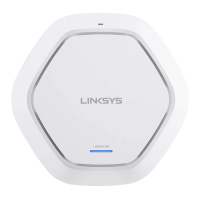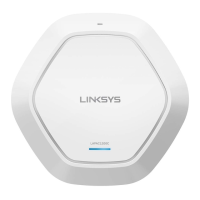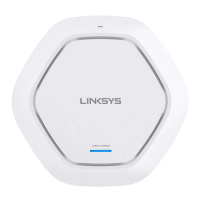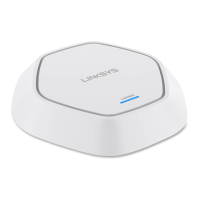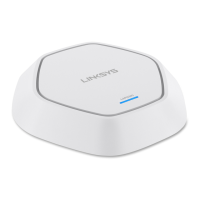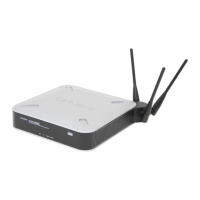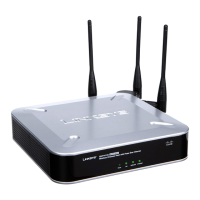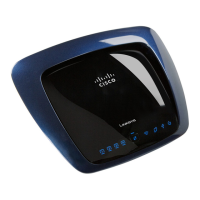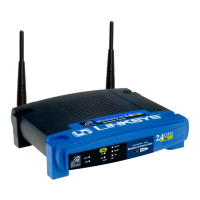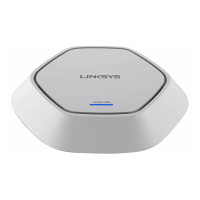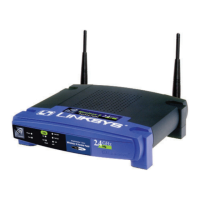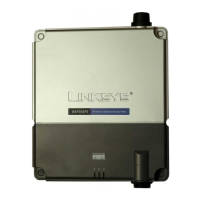Wireless Station Configuration
For each of the following, wireless stations must have the same settings as the wireless access
point.
Mode
On each PC, the mode must be set to Infrastructure.
SSID (ESSID)
This must match the value used on the wireless access
point.
The default value is LinksysSMB24Gfor radio 1 and
LinksysSMB5Gfor radio 2
.
Note—The SSID is case sensitive.
802.1x
Authentication
Each client must obtain a certificate for authentication for
the RADIUS server.
802.1x
Encryption
Typically, EAP-TLS is used. This is a dynamic key system,
so keys do NOT have to be entered on each wireless
station.
You can also use a static WEP key (EAP-MD5). The
wireless access point supports both methods
simultaneously.
RADIUS Server Configuration
If using WPA2-Enterprise mode, the RADIUS server on your network must be configured as
follows:
•
It must provide and accept certificates for user authentication.
•
There must be a client login for the wireless access point itself.
•
The wireless access point will use its default name as its client login name. (However, your
RADIUS server may ignore this and use the IP address instead.)
•
The Shared Key, set on the Security screen of the access point, must match the Shared
Secret value on the RADIUS server.
•
Encryption settings must be correct.
121
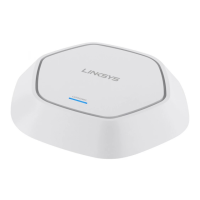
